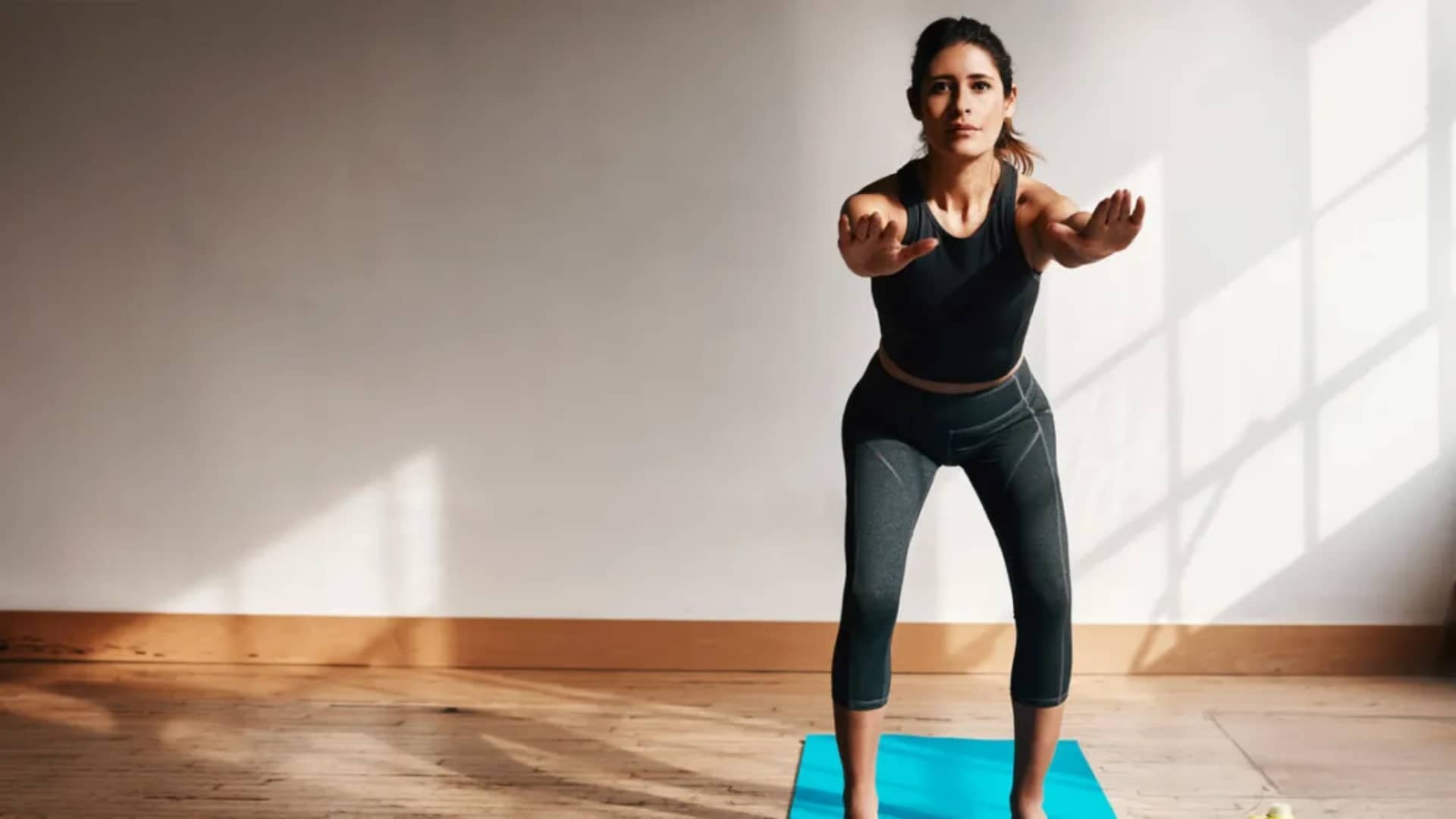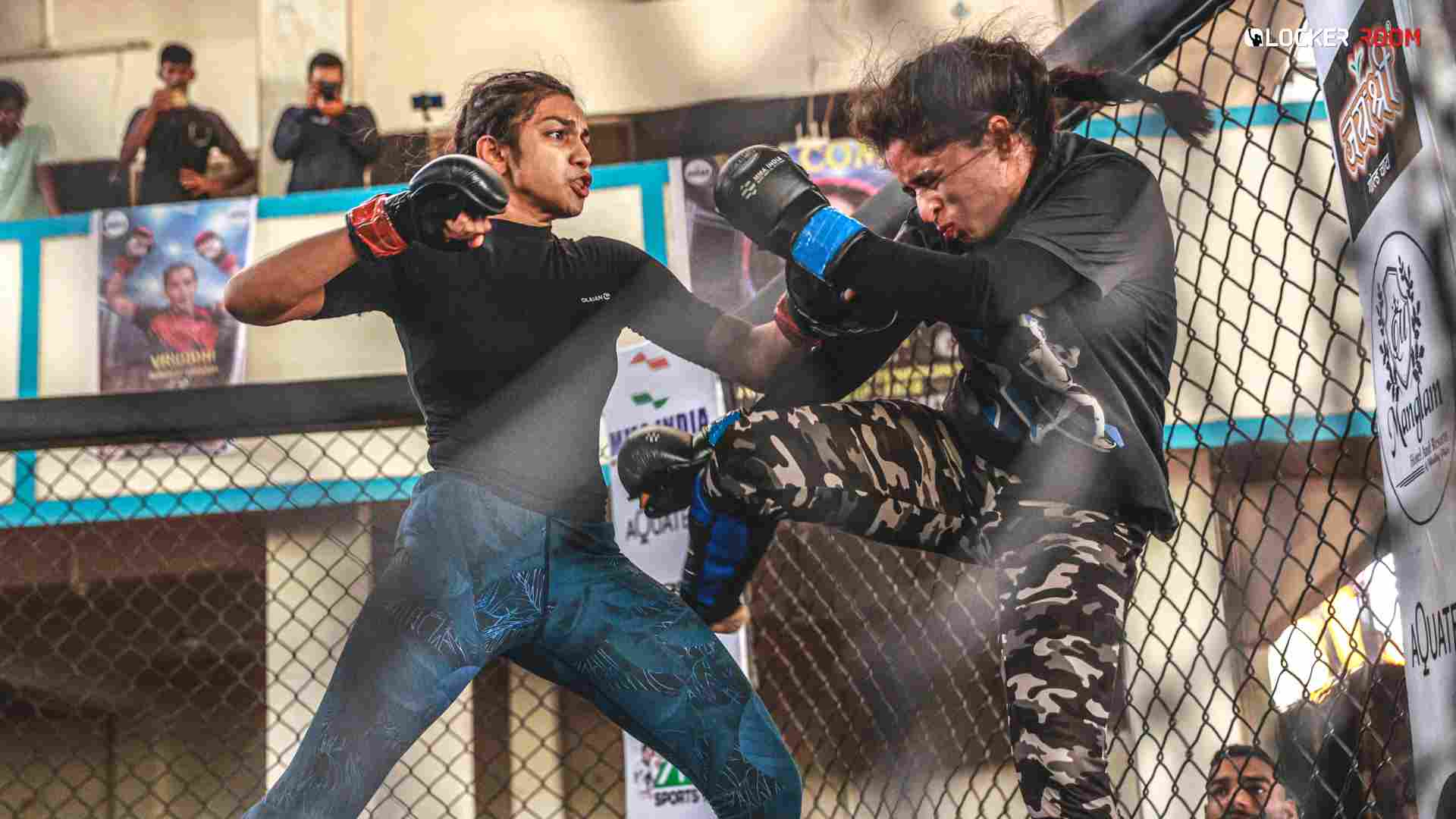Hindu squats, also known as "Baithak" or "Baithak Squats," are a traditional Indian exercise that has been used for centuries to build strength and endurance in the legs and lower body.
How to do Hindu Squats
The exercise is performed by standing with the feet shoulder-width apart and the hands resting on the hips or extended out in front of the body. The individual then performs a deep squat, lowering the body as far as possible while keeping the feet flat on the ground and the back straight. You can see the steps for performing Hindu Squats below.
- Stand with your feet shoulder-width apart, toes pointed slightly outward. Keep your chest lifted and your back straight.
- Lower your body into a squatting position by bending your knees and hips, as if you are sitting back into a chair. Keep your weight on your heels and your arms relaxed by your sides.
- As you squat down, raise your arms out in front of you at shoulder height, palms facing down.
- Push through your heels to stand back up, straightening your legs and hips. As you do so, lower your arms back to your sides.
- Repeat the movement for the desired number of repetitions.
Tips for performing Hindu squats:
- Keep your movements slow and controlled, rather than bouncing or swinging your body.
- Avoid letting your knees extend over your toes as you squat down.
- Engage your core and maintain good posture throughout the exercise.
- If you find the movement difficult, you can start by performing the exercise with your back against a wall to support your body weight.
- Gradually increase the number of repetitions as you become stronger.
What are the benefits of Hindu Squats?
Hindu Squats have plenty of benefits. You can see some of them below.
- Strengthening the legs and glutes. Hindu squats target the muscles in the legs, including the quadriceps, hamstrings, and calves, as well as the gluteal muscles in the buttocks. Regularly performing Hindu squats can help to improve the strength and tone of these muscles.
- Improving balance and stability. The squatting motion used in Hindu squats requires balance and stability in the legs and hips. This can help to improve overall balance and stability in the body.
- Increasing cardiovascular endurance. Hindu squats are a form of high-intensity interval training (HIIT), which can help to improve cardiovascular endurance. By performing multiple repetitions of the exercise in quick succession, you can increase your heart rate and challenge your cardiovascular system.
- Burning calories and aiding weight loss. Hindu squats are a form of aerobic exercise, which means they can help to burn calories and support weight loss efforts. In addition, the strength-building effects of the exercise can help to increase muscle mass, which can boost metabolism and support weight loss.
- Improving flexibility and mobility. Squatting down and standing back up repeatedly can help to improve flexibility in the legs and hips. This can help to improve overall mobility and range of motion in the body.
Origins of Hindu Squats
The origins of Hindu squats can be traced back to ancient India, where they were commonly used by wrestlers and other athletes to prepare for competition. They were also used by warriors to build strength and endurance for battle, and by laborers to improve their stamina and physical endurance. Over time, the exercise became popular among the general population as a way to stay healthy and fit.
ALSO READ | Hindu Pushups: Everything you need to know
Hindu Squats Muscles Worked
The primary muscles targeted during Hindu squats are:
- Quadriceps. The quadriceps muscles are in the front of the thigh. They are responsible for extending the knee and helping to straighten the leg.
- Hamstrings. The hamstrings are in the back of the thigh. They are responsible for flexing the knee and helping to bend the leg.
- Gluteal muscles. The gluteal muscles, also known as the glutes, are in the buttocks. They are responsible for extending the hip and helping to move the leg out to the side.
- Calves. The calves are in the lower leg. They are responsible for plantar flexion, or pointing the toes downward.
In addition to these primary muscle groups, Hindu squats also engage the muscles in the core and the lower back. Engaging these muscles helps to maintain good posture and support the body during the squatting motion.
Overall, Hindu squats are an effective way to strengthen and tone the muscles in the legs and glutes. Regularly performing the exercise can help to improve the strength and tone of these muscle groups, as well as improve overall balance and stability in the body. Photo Courtesy








Leave a comment
Please login to leave a comment.